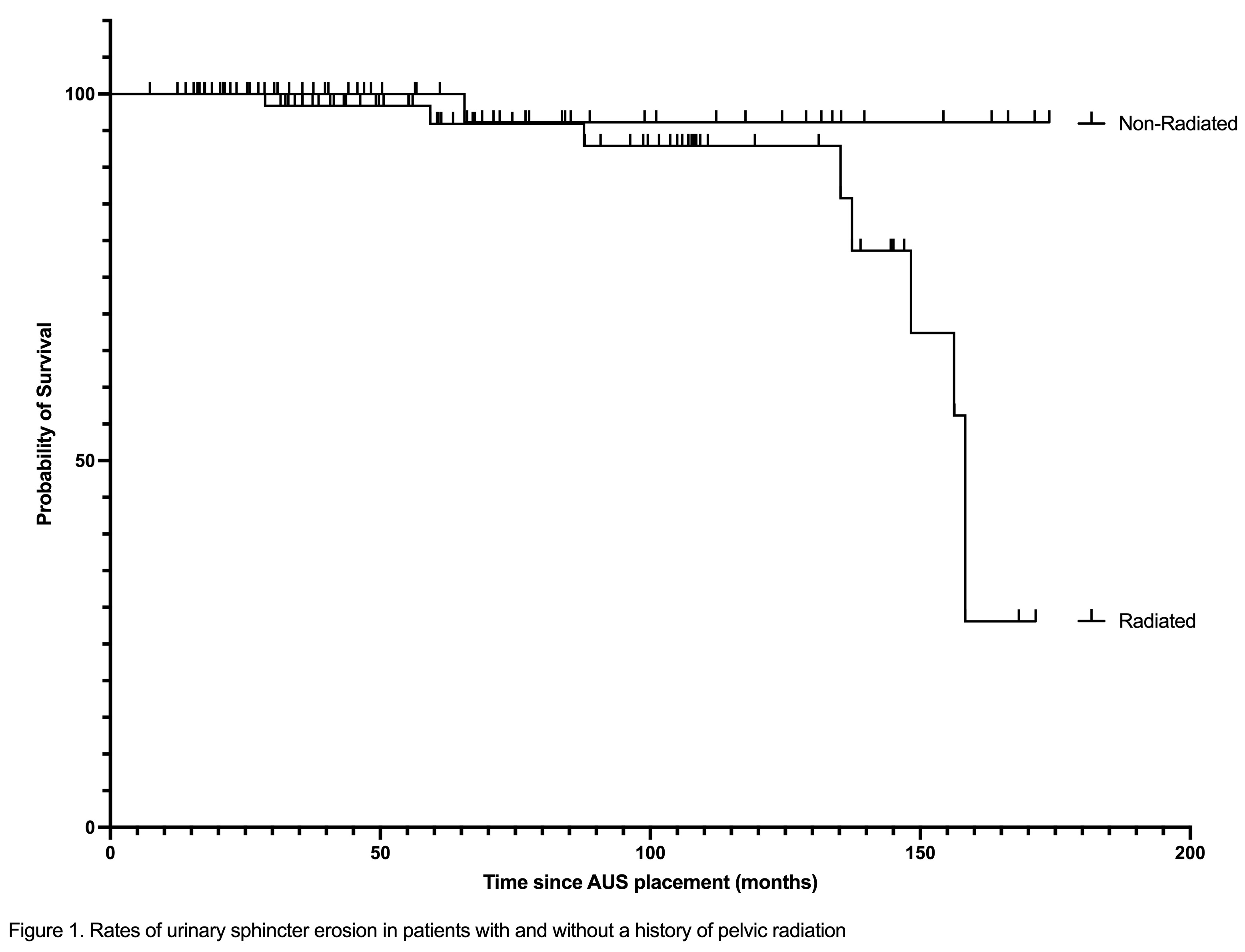Back
Poster, Podium & Video Sessions
Moderated Poster
MP52: Urodynamics/Lower Urinary Tract Dysfunction/Female Pelvic Medicine: Male Incontinence: Therapy
MP52-09: Safety of Transurethral Endoscopic Treatment in Men with an Artificial Urinary Sphincter: a 15 Year Analysis
Monday, May 16, 2022
7:00 AM – 8:15 AM
Location: Room 228
Corey Weinstein*, BROOKLYN, NY, Jaspreet Sandhu, New York, NY
- CW
Poster Presenter(s)
Introduction: Incontinence after prostate treatment (IPT) is an uncommon but highly bothersome complaint for patients. Placement of an artificial urinary sphincter (AUS) is the gold standard treatment for IPT. Transurethral endoscopic treatment (TET) after AUS is typically avoided due to the presumed increased risk of AUS cuff erosion after passage of a cystoscope after AUS placement. We set out to determine the rate of erosion in patients undergoing TET after placement of an artificial urinary sphincter (AUS).
Methods: Patients with AUS devices implanted by two surgeons between January 1, 2006 and January 1, 2021 were examined. Patients undergoing a transurethral procedure were included; those that underwent TET for a work-up of a non-functioning AUS were excluded from analysis. Follow up was calculated by last assessment in the outpatient setting.
Results: 124 patients were identified that met inclusion criteria, 71 of which were in patients with a history of radiation therapy (RT). 179 AUS were implanted during the study period. Median follow up was 62.4 months. Mean number of TET was 2.5. Procedures included incision of bladder neck contracture, transurethral resection of bladder tumor, cystolitholapaxy, ureteroscopy, and surveillance cystoscopy. There were 10 device erosions (8%) during the follow up at an average of 26.5 months post AUS placement, 9 of which occurred in patients with a history of RT.
Conclusions: TET is safe in patients post-AUS particularly in radiation naïve patients, and the rate of erosion in patients undergoing TET is similar to reported rates of erosion in all AUS patients within the literature. Further research with multi-institutional collaboration is necessary to better understand the risks of erosion in patients with an AUS device undergoing TET.
Source of Funding: None


Methods: Patients with AUS devices implanted by two surgeons between January 1, 2006 and January 1, 2021 were examined. Patients undergoing a transurethral procedure were included; those that underwent TET for a work-up of a non-functioning AUS were excluded from analysis. Follow up was calculated by last assessment in the outpatient setting.
Results: 124 patients were identified that met inclusion criteria, 71 of which were in patients with a history of radiation therapy (RT). 179 AUS were implanted during the study period. Median follow up was 62.4 months. Mean number of TET was 2.5. Procedures included incision of bladder neck contracture, transurethral resection of bladder tumor, cystolitholapaxy, ureteroscopy, and surveillance cystoscopy. There were 10 device erosions (8%) during the follow up at an average of 26.5 months post AUS placement, 9 of which occurred in patients with a history of RT.
Conclusions: TET is safe in patients post-AUS particularly in radiation naïve patients, and the rate of erosion in patients undergoing TET is similar to reported rates of erosion in all AUS patients within the literature. Further research with multi-institutional collaboration is necessary to better understand the risks of erosion in patients with an AUS device undergoing TET.
Source of Funding: None



.jpg)
.jpg)